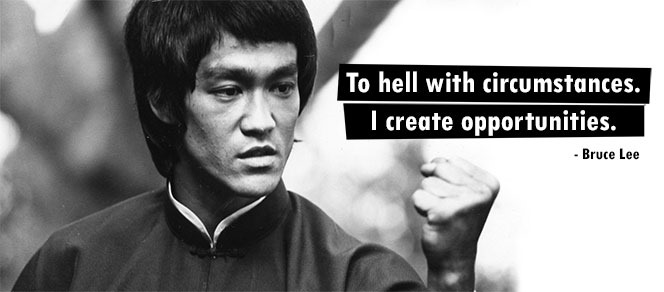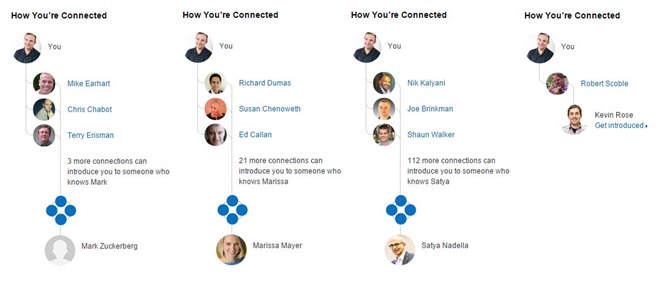
In most social networks, connecting with someone else can feel like a personal decision. After all, if you accept a friend request in Facebook, you’ve just given access to all of your “private” images and updates. They’ll see that embarrassing photo of you at the beach. {GASP!} This has trained us to be weary of who we allow to be “connected” with us online. So much so that some people have private Twitter accounts. (Something that I have yet to understand.)
Six Degrees of Separation
The way LinkedIn was created was based upon the six degrees of separation, the theory that everything is somehow 6 steps or less connected to other things. Do you remember the Six Degrees of Kevin Bacon game that people once played? LinkedIn takes advantage of that theory, by connecting professionals that otherwise might not be able to be connected, for the end goal of exposing new opportunities to each other. They even display it to you when looking at other peoples profiles. For example, it was interesting to see just how close I am to knowing CEO’s of major companies, like Facebook, Yahoo, and Microsoft.

What if I had an amazingly ground-breaking idea or opportunity for one of them, or vice-versa? LinkedIn makes it possible to do what wasn’t imaginable 15-20 years ago. We can find each other through mutual connections. For example, I can ask Mike Earhart to help get me a meeting with Mark Zuckerberg. Without these connections, I wouldn’t know how to even begin such a task, much less the right person to contact to make it happen.
In a real world application of this idea, your opportunities probably won’t involve Facebook or Microsoft – but the principle is the same. You might be looking for that next opportunity, or it might be looking for you.
Now How About That LinkedIn Connection Request?
In general, I’d tell you to accept pretty much every single LinkedIn request you get. This is pretty much the rule I live by myself. The only connections I turn down are the few that look obviously spammy. You should also never be afraid to ask for a LinkedIn connection, and never turn down an inbound connection request.
You simply never know how that connection might turn into something unexpectedly amazing – like your next job, the co-founder of your next startup, your foot in the door at the next client, or your savior when you need some critical information during your next project. They might even be the key to you getting introduced to a high-powered CEO.
If you’re using LinkedIn correctly, these same connections could also amplify your reach to other people when they like, comment on, or share your updates.
Oh, and by the way… there’s no harm to accepting anyone’s request. If they become annoying or are spammers, LinkedIn makes it easy for you to block or remove them.
Wait a Second, What About the Spammers?
Out of all of the major social networks, LinkedIn appears to have the least spammers as far as I can tell. At least, I don’t run into them a whole lot. For the most part, the profiles appear to be real people. Now, some of them are simply there to generate more sales for their business, but they’re real people, with a real profile, and other real profiles connected to them.
This article is cross-posted from my personal blog.